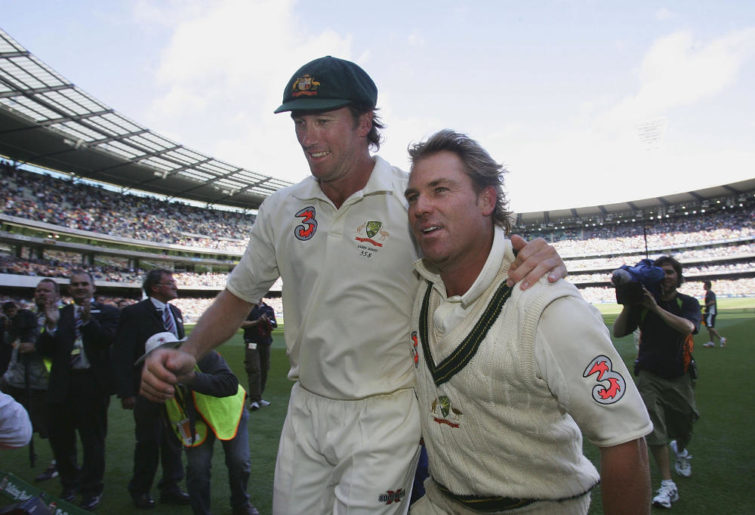Australia imploded at Headingley.
A bungled runout, a grassed chance and a fanciful referral cost the tourists dearly in the death throes.
But while the culmination of an enthralling match played out to a Keystone Cops script the genesis of the loss came a few hours earlier.
England entered the fourth day at 3-156, requiring a further 203 runs to keep its quest for the Ashes alive.
Before hostilities resumed thoughts were already being cast forward half an hour.
Eight overs into the penultimate day Australia could avail itself of the second new ball.
Given the damage successive new Dukes balls had wreaked earlier in the game it was being signposted as the next seminal moment in the match.
But prior to that England had to survive the initial ball as it wound down to its used by date.
James Pattinson bowled the opening over from the Kirkstall Lane end – it was a maiden as Joe Root eased his way into the day.
The next over from Josh Hazlewood was also a maiden, as was Pattinson’s second over and Hazlewood’s second after that.
The first run finally came from the second ball of Pattinson’s third over.
Twenty minutes and 26 balls into the day the partisan English crowd finally had something to cheer about.
For Australia, it was simply the continuation of a game plan hatched pre-series.
On four previous Ashes tours, dating back to 2005, Australia had unleashed raw pace against England’s batsmen.
Brett Lee, Shaun Tait, Mitchell Johnson and Mitchell Starc had all tried to unsettle and unnerve England’s batting line-ups.
Each time, Australia came up short.
This time around the brains trust formulated a different strategy.
The aim was to make it a battle of attrition, a strangulation on the scoreboard.
It was a philosophy that bore fruit in 2004 when Australia breached the final frontier in India.
Against a free-flowing Indian batting line-up, the Adam Gilchrist-led Australian team decided that the best way of claiming wickets was to invoke stagnation on the scoreboard.
While Lee was in the tour party, he didn’t get a start across the four Tests.
Instead, Australia went for the threesome of Glenn McGrath, Jason Gillespie and Michael Kasprowicz, supported by the guile of Shane Warne.
It was considered that trio of quicks could force the Indian batsmen into error as a result of not being able to tick the scoreboard over.
In the end, Australia got the job done with all three quicks putting in miserly performances across the series – McGrath (2.5rpo), Gillespie (2.4) and Kasprowicz (2.4).

McGrath and Warne (Photo by Hamish Blair/Getty Images)
Lee was considered to fall outside the game plan given his propensity to bleed runs when things weren’t on song.
Rolling forward 15 years, Starc is currently on the bench for the very same reason.
The brains trust looked at England’s batting line-up and saw within it numerous men whose game was built around aggression – Jason Roy, Jonny Bairstow, Jos Buttler and Ben Stokes.
Australia believed frustration would lead to wickets if that quartet could be stymied and prevented from playing their natural game.
Australia went with Pat Cummins, James Pattinson and Peter Siddle for the first Test of the series at Edgbaston where the tourists recorded a resounding 251-run win.
Hazlewood came in for Pattinson at Lord’s where Australia drew.
For Leeds, Siddle made way for Pattinson.
In the first innings at Headingley, Cummins (9-4-23-3), Hazlewood (12.5-2-30-5) and Pattinson (5-2-9-2) bowled the dry line and length they were selected to do with their suffocating pressure resulting in England being shot out for their lowest Ashes score since Don Bradman’s final Test in 1948.
All was right in Australia’s world.
Even more so when England was later set 359 to win.
Australia’s plan was providing positive results and more of the same was anticipated.

Pat Cummins (Photo by Albert Perez – CA/Cricket Australia/Getty Images)
When Nathan Lyon entered the attack after five overs on the fourth day at Headingley, England had added just one run.
Stokes at that stage had faced 66 balls and scored just two runs – he had been given nothing to allow him to get going.
With his third ball Lyon had Root brilliantly caught at slip by an airborne David Warner.
With the England skipper’s 205-ball vigil terminated the pendulum swung heavily towards the visitors.
Fifteen balls later, at the cessation of the 80th over, Tim Paine opted to take the new ball.
Both Stokes and Bairstow were on alert.
For Australia, it was a chance to go for the jugular.
What ensued however was far from pretty from an Australian perspective.
Collectively, the radar faltered.
One Hazlewood over contained successive boundaries from full balls wide of off-stump.

Josh Hazlewood (AAP Image/Richard Wainwright)
He over-corrected with the next delivery and conceded two leg byes.
A Pattinson over went for 13 runs, including four leg byes and a delivery that skittled Warner at slip and scuttled away for five wides.
While the principal aggressor was Bairstow, Stokes emerged from his run-scoring hibernation and started to take toll of Australia’s waywardness.
After reaching 18 from 94 balls he began to open his shoulders culminating in a six into the Western Terrace off Cummins.
In the space of 12 overs with the second new ball Australia conceded 63 runs.
When the quicks hit the right length there was still movement – enough to beat the bat on several occasions but there was too big a drought between those well directed deliveries.
It allowed England to leapfrog from 4-166 to 4-229.
Shortly after, the hosts went to lunch at 4-238, needing just another 121 runs to steal victory.
At that point, the win predictor was tilting England’s way.
The bowlers recalibrated during the interval and Hazlewood dislodged Bairstow shortly after the resumption.
Following the demise of Bairstow, teammates Buttler, Chris Woakes, Jofra Archer and Stuart Broad followed.
The initial twenty overs after lunch produced 5-48.
Had the dozen overs prior to the interval been as probing and economical it would likely have proved a bridge too far for England.
When presented with the new ball and a pitch that still had enough in it to aid good bowling Australia faltered.
That hour of waywardness allowed England back into the contest.
And some brilliance from Stokes thereafter got them home.































































































